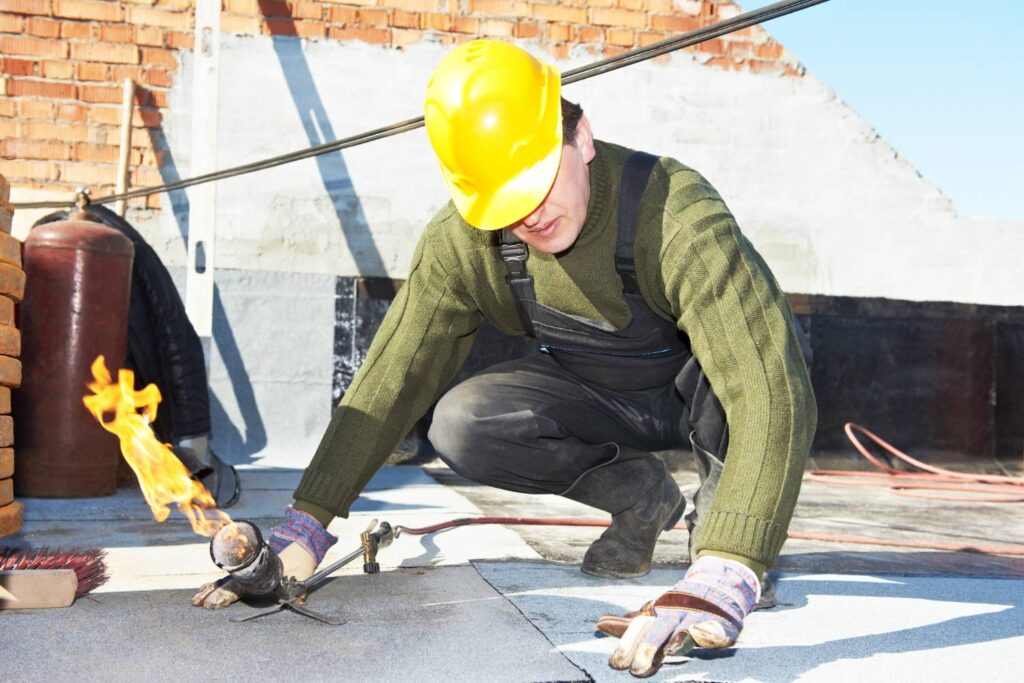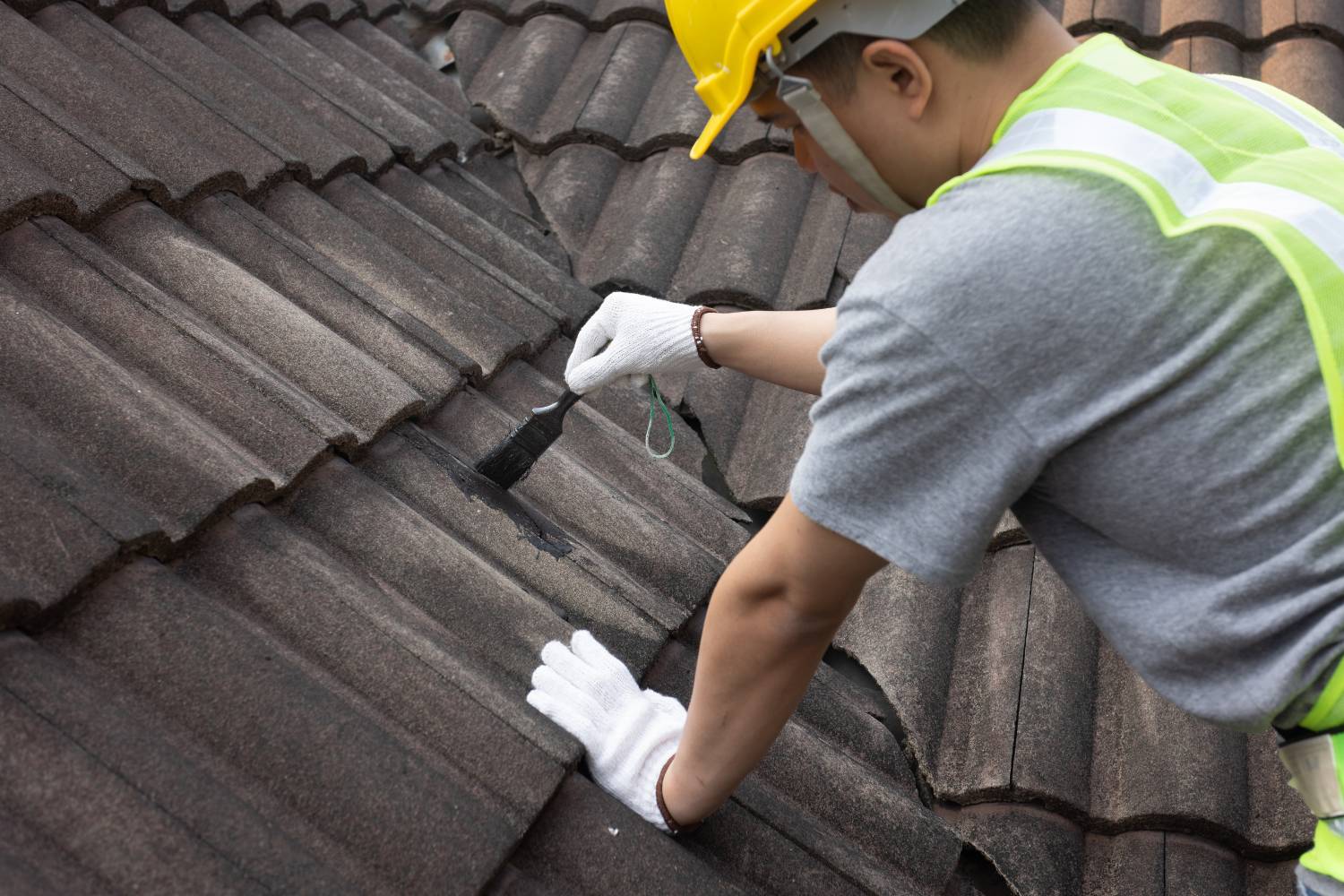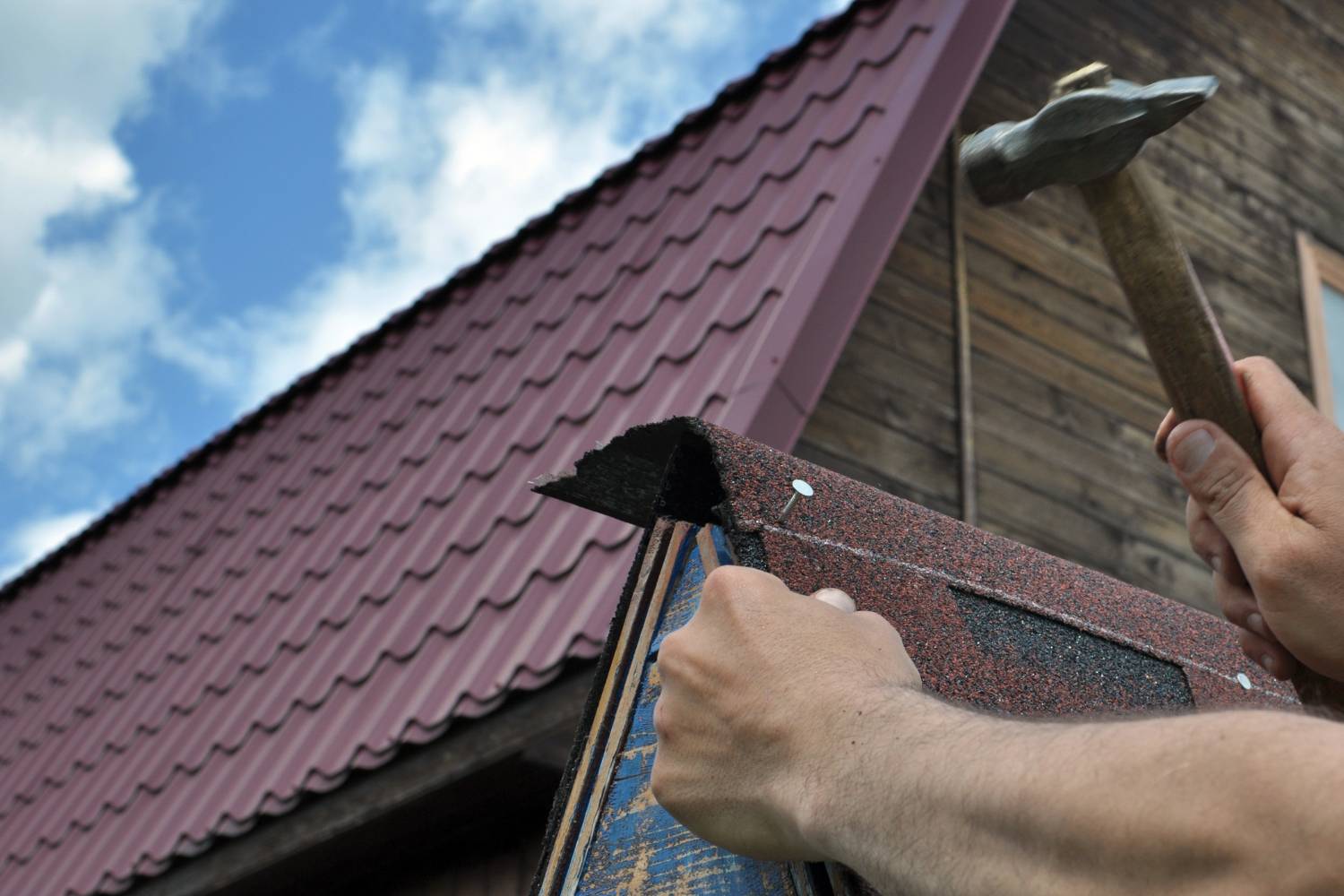Choosing the best materials to prevent roof leaks is a crucial step in ensuring the longevity and integrity of your home. Roof leaks can lead to a multitude of problems, ranging from structural damage to health risks caused by mould and mildew. By selecting the right materials, homeowners can safeguard their properties against these issues, maintaining both the aesthetic appeal and functional performance of their roofs.
In this blog, we're discussing the various materials that are effective in preventing roof leaks. We'll explore the benefits of each material, considering factors such as durability, cost, and maintenance requirements. Understanding these elements will help you make informed decisions that not only protect your home but also provide long-term value. Whether you're building a new home or restoring an existing roof, knowing the best materials to prevent leaks is essential for ensuring a safe and secure living environment.
Why Is It Important To Prevent Roof Leaks?
Roof leaks can be a homeowner's worst nightmare. From causing structural damage to posing health risks, the consequences of ignoring a leaky roof are extensive. Preventing roof leaks is crucial to maintaining the integrity of your home and ensuring the safety and well-being of its inhabitants. This blog explores the importance of preventing roof leaks and provides practical solutions to keep your roof in top condition.
Early Detection Saves Money
- Cost-effective solutions: Regular roof inspections can identify potential issues before they escalate into major problems, saving homeowners significant repair costs.
- Prevention of extensive damage: Addressing small leaks early prevents extensive damage to the roof structure and interior of the home, maintaining property value.
Prevents Structural Damage
- Protects structural integrity: Ignoring leaks can lead to water seeping into walls, ceilings, and floors, causing them to weaken and deteriorate.
- Regular maintenance: Regular inspections and prompt repairs of damaged shingles and flashings can prevent leaks and subsequent structural damage.
Increases Energy Efficiency
- Maintains insulation effectiveness: Leaks can compromise insulation, leading to higher heating and cooling costs as HVAC systems work harder to maintain comfortable temperatures.
- Reduces utility bills: By ensuring the roof is leak-free, energy efficiency is improved, resulting in lower utility bills.
Protects Belongings From Water Damage
- Preserve valuable items: Water damage from leaks can ruin sentimental items, important documents, and expensive electronics.
- Prevents mould and mildew: Excess moisture from leaks fosters mould and mildew growth, which can damage belongings and pose health risks.
Preserves The Lifespan Of The Roof
- Prolong durability: Regular maintenance and timely repairs extend the lifespan of the roof, preventing the need for costly replacements.
- Prevents corrosion: Inspections and repairs help prevent corrosion of metal roofs, maintaining their structural integrity.
Reduces The Risk Of Electrical Hazards
- Prevents water intrusion into electrical systems: Leaks can lead to water seeping into electrical systems, increasing the risk of fires and electrical accidents.
Prevents Potential Health Issues
- Maintains indoor air quality: Leaks can lead to mould and mildew growth, releasing spores that worsen respiratory health and trigger allergies.
- Prevents pest infestations: Moisture from leaks attracts pests, which can carry diseases and cause further damage to the property.
Preserves The Aesthetic Appeal Of The Property
- Prevents unsightly stains: Promptly addressing leaks prevents water stains on ceilings and walls, maintaining the property's visual appeal.
- Maintains property value: A well-maintained roof enhances curb appeal and attracts potential buyers, ensuring the property remains a sound investment.
Provides Peace Of Mind To Homeowners
- Ensures safety: Regular roof maintenance and repairs provide homeowners with peace of mind, knowing their home is safe and protected from potential hazards.
How To Choose The Right Materials For Your Roof?
Choosing the right roofing material for your home is crucial for both functionality and aesthetics. This guide will help you navigate the various options available, considering factors such as climate, budget, and style.
Factors To Consider In Choosing Roof Materials
Roof Slope
Why Do Steeper Slopes Require More Durable Materials?
Steeper roof slopes demand more durable materials due to the increased exposure to environmental elements. The angle of a steep roof means it faces direct impact from wind, rain, and other weather conditions.
Materials like metal, tile, or high-quality asphalt shingles are preferred because they offer greater resistance to these elements, ensuring longevity and performance. Additionally, the steeper the slope, the more critical it is to have materials that can securely adhere to the roof and withstand potential uplift from high winds.
Why Are Steep Roofs More Expensive?
Steep roofs are inherently more expensive for several reasons. Firstly, the increased slope requires more material to cover the same area compared to a flat or gently sloped roof. This additional material contributes to higher overall costs.
Secondly, the complexity of working on steep slopes often necessitates specialised equipment and safety measures, leading to higher labour costs. The risk factor and difficulty level for contractors also increases, further driving up the price. Consequently, budget considerations must account for these factors when planning a roof restoration on a steep slope.
How Do Slopes Affect Water Drainage?
The slope of a roof significantly impacts its ability to drain water efficiently. In areas with heavy precipitation, proper water drainage is crucial to prevent water pooling and potential damage. Steeper slopes facilitate quicker and more effective water runoff, reducing the likelihood of leaks, water damage, and mould growth.
Conversely, flatter roofs require more robust drainage systems to handle water flow and prevent accumulation. Understanding the local climate and precipitation patterns is essential when selecting the appropriate slope and drainage solutions for your roof restoration project.
Colour and Reflectivity
How Does Colour and Reflectivity Impact Roof Performance?
When selecting materials for roof restoration, the colour and reflectivity of the roofing material are crucial factors, especially in hot climates. Here's why:
Reflective Materials and Heat Management:
Light-coloured, reflective roofing materials can significantly improve the thermal performance of a building. These materials are designed to reflect more sunlight and absorb less heat compared to darker, non-reflective materials. This property is particularly beneficial in hot climates where managing indoor temperatures is essential for comfort and energy efficiency.
Maintenance
Different Materials Require Varying Levels Of Maintenance
The type of material used for your roof greatly influences the amount of maintenance it will need. For instance, asphalt shingles, one of the most common roofing materials, typically require moderate upkeep, including periodic inspections and minor repairs.
In contrast, metal roofs are highly durable and demand less frequent maintenance, often just needing occasional cleaning and checking for loose fasteners. Tile and slate roofs, while extremely long-lasting, may require more specialised care to replace broken tiles and ensure the integrity of the underlayment.
Regular Upkeep Is Essential To Extend The Life Of Your Roof
No matter the material, regular maintenance is crucial to prolong the lifespan of your roof. This includes routine inspections to identify and address minor issues before they escalate into major problems.
Tasks such as clearing debris from gutters, checking for moss and algae growth, and ensuring proper ventilation help maintain your roof's health. Ignoring regular maintenance can lead to premature aging of the roofing material, leaks, and costly repairs.
Consider The Long-Term Maintenance Costs When Choosing A Material
When selecting a roofing material, it's important to think beyond the initial installation cost. Some materials, while cheaper upfront, may incur higher maintenance expenses over time. For example, wood shingles may be attractive and relatively inexpensive to install but can require frequent treatment to prevent rot and insect damage. On the other hand, metal or synthetic roofing materials might have a higher initial cost but offer lower maintenance requirements and longer lifespans, potentially saving money in the long run.
Material Weight
Why is the weight of roofing materials important?
When planning a roof restoration, one crucial factor to consider is the weight of the roofing materials. This is important because the structure of your house must be able to support the weight of these materials to ensure the safety and longevity of the roof.
Can your house support the weight of the roofing material?
The first step is to assess whether your house can support the weight of your chosen roofing material. Some materials are significantly heavier than others and may require additional support or reinforcements to your existing structure. Consulting with a structural engineer or a professional roofing contractor can help you determine the load-bearing capacity of your home.
What are the implications of using heavier materials like slate or tile?
Heavier materials, such as slate or tile, are known for their durability and longevity. They can withstand harsh weather conditions and have a longer lifespan compared to lighter materials. However, their significant weight means they require a more robust supporting structure.
If your current roof structure is not designed to handle such heavy materials, you may need to invest in reinforcing your roof's framework. This could involve adding additional support beams or using stronger materials for the roof deck.
What are some alternative roofing materials?
If reinforcing your roof structure is not feasible or within your budget, you might consider lighter roofing materials that still offer durability and aesthetic appeal. Options such as asphalt shingles, metal roofing, or synthetic tiles can provide a good balance of weight, strength, and cost-effectiveness. These materials are easier to install and generally do not require significant structural modifications.
Price Variability
What Should You Consider When Budgeting for Material and Labour Costs?
When planning a roof restoration project, understanding the factors that influence price variability is crucial. Budgeting accurately for both material and labour costs will help ensure your project stays on track and within your financial limits.
Why Are Asphalt Shingles More Affordable?
Asphalt shingles are one of the most popular roofing materials due to their affordability and versatility. Several factors contribute to their lower cost:
- Material Availability: Asphalt is readily available and manufactured in large quantities, which helps keep prices down.
- Ease of Installation: The installation process for asphalt shingles is relatively straightforward, reducing labour costs.
- Longevity and Maintenance: While asphalt shingles may not last as long as more expensive materials, they require less upfront investment, making them an attractive option for budget-conscious homeowners.
Warranty
Opt for materials with longer warranties for better long-term investment.
When selecting materials for roof restoration, it's crucial to consider the warranty offered. A longer warranty period generally signifies a better quality product, making it a wiser long-term investment. Materials with extended warranties are less likely to need frequent replacements or repairs, saving you money over time.
A substantial warranty indicates the manufacturer's confidence in their product's durability.
A robust warranty reflects the manufacturer's trust in their product's performance and longevity. When a manufacturer offers an extensive warranty, it's a strong indicator that the material is built to last and can withstand various environmental conditions. This confidence stems from rigorous testing and high production standards, ensuring that you receive a reliable and durable roofing solution.
Conclusion
Selecting the best materials to prevent roof leaks is a critical investment in the longevity, safety, and efficiency of your home. The right roofing materials can safeguard your property from the extensive damage caused by leaks, ensuring structural integrity, protecting your belongings, and maintaining a healthy living environment.
By understanding the importance of early detection, the impact of roof slopes, the benefits of reflective materials, and the necessity of regular maintenance, you can make informed decisions that balance cost, durability, and aesthetic appeal.
When planning your roof restoration, consider the weight and structural implications of your chosen materials, and be mindful of your budget and long-term maintenance costs. Opting for materials with longer warranties can provide peace of mind and signify a sound long-term investment.
Ultimately, preventing roof leaks not only preserves the value and beauty of your home but also contributes to a safer, more comfortable living space. By choosing the right materials and adhering to regular maintenance practices, you can ensure your roof remains resilient and functional for years to come.
Frequently Asked Questions
The best materials for preventing roof leaks include metal roofing, asphalt shingles, clay or concrete tiles, and synthetic roofing materials. Each has its own advantages:
- Metal Roofing: Highly durable and resistant to leaks due to overlapping panels.
- Asphalt Shingles: Affordable and effective with proper installation and maintenance.
- Clay or Concrete Tiles: Long-lasting and excellent at shedding water.
- Synthetic Roofing Materials: Made from rubber or plastic, offering high resistance to leaks and easy installation.
Metal roofs are highly effective in preventing leaks due to their interlocking panels and durable materials. They are less likely to develop cracks or gaps where water can seep in. Additionally, metal roofs can last up to 50 years or more with minimal maintenance, making them a long-term solution for leak prevention.
Asphalt shingles are a popular and cost-effective choice for preventing leaks. They are designed to be waterproof and can be easily replaced if damaged. However, their effectiveness depends on proper installation and regular maintenance. Ensuring shingles are not cracked or missing and addressing any issues promptly can significantly reduce the risk of leaks.
Clay and concrete tiles are excellent for preventing roof leaks due to their heavy and dense structure. They are highly resistant to weathering and can last for decades. These tiles are especially effective in areas with heavy rainfall, as they quickly shed water and prevent accumulation. However, they require a strong roof structure to support their weight.
Synthetic roofing materials, such as rubber or plastic composites, are designed to be highly resistant to leaks. They often come with waterproofing properties and are less prone to cracking or breaking compared to natural materials. Synthetic options are also lightweight and easy to install, making them an attractive choice for homeowners looking for durable and leak-resistant roofing solutions.


